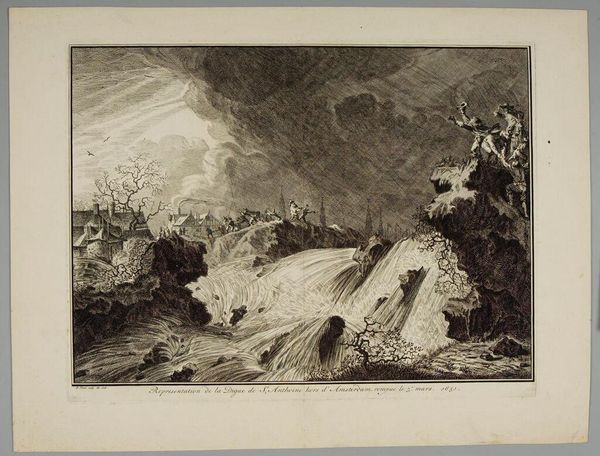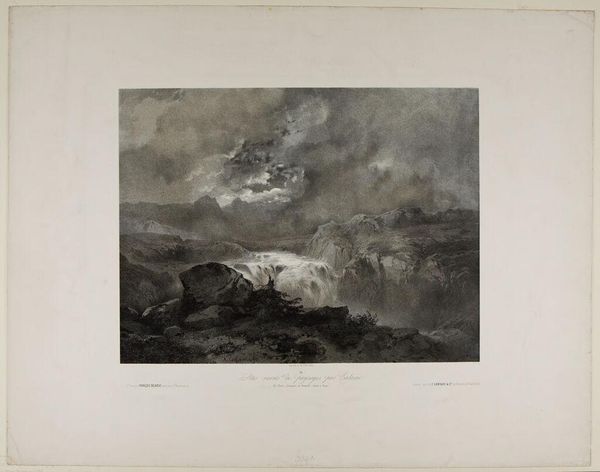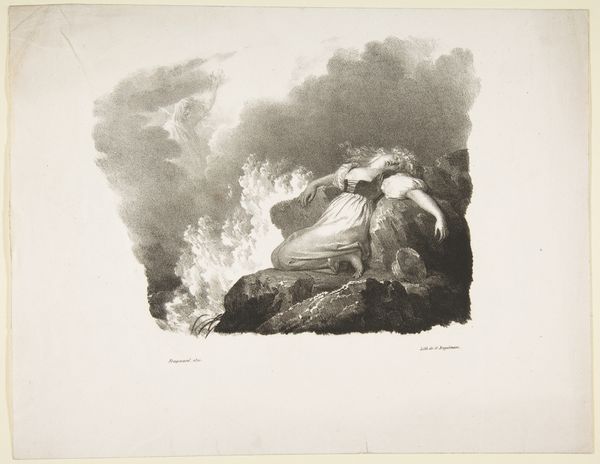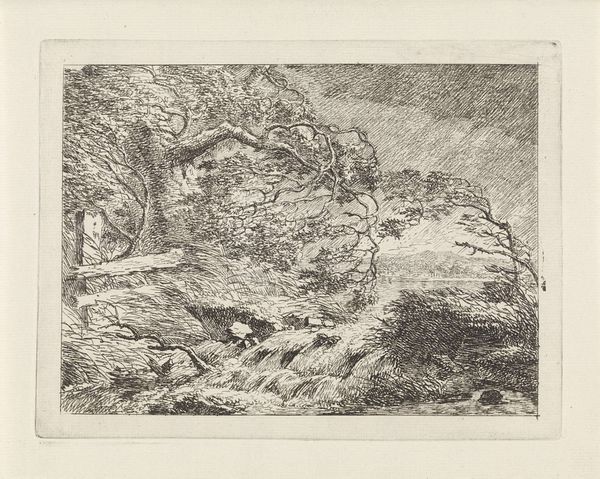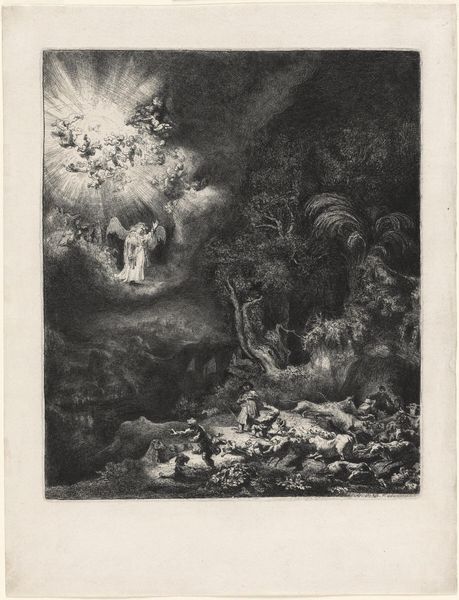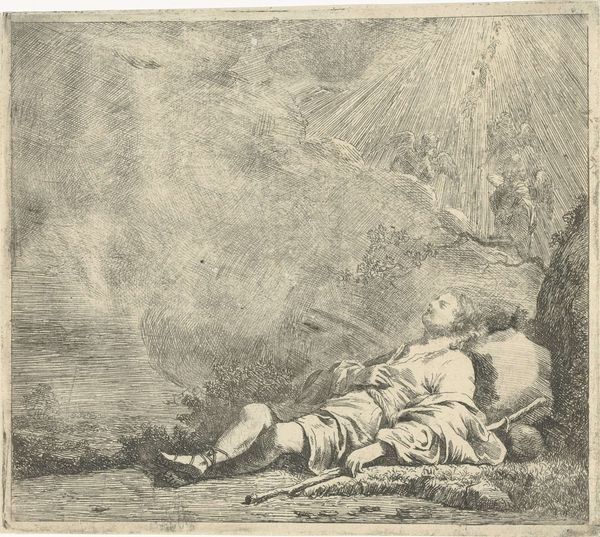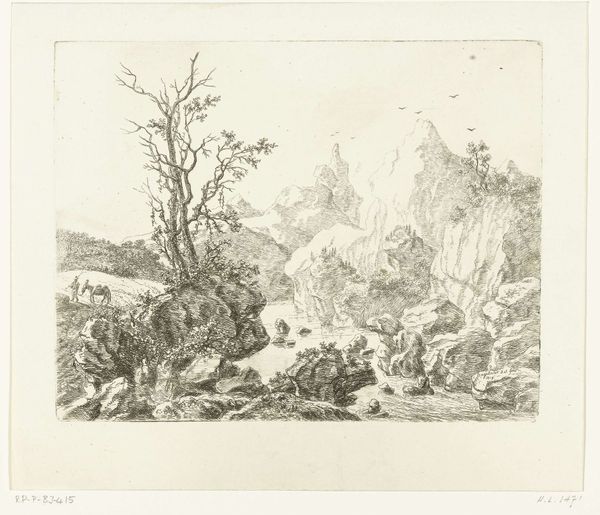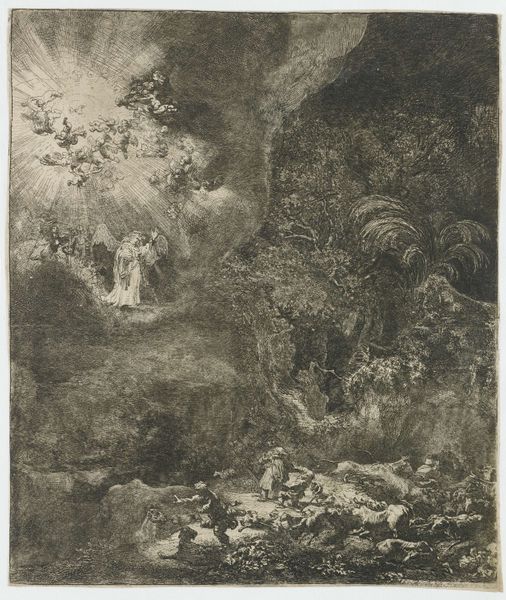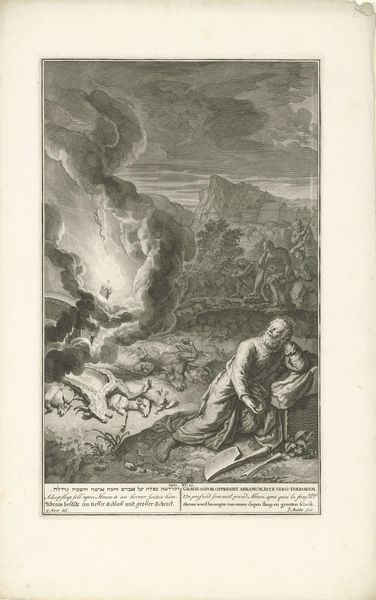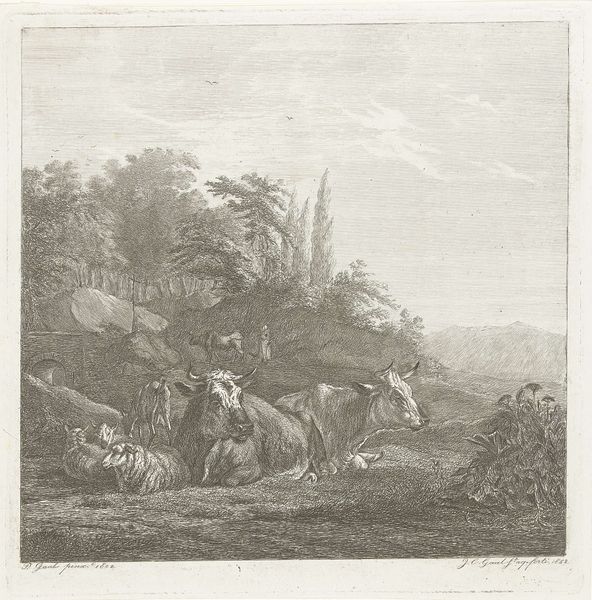
print, engraving
#
baroque
# print
#
old engraving style
#
landscape
#
cityscape
#
history-painting
#
engraving
#
realism
Dimensions: height 270 mm, width 356 mm
Copyright: Rijks Museum: Open Domain
Curator: This is Bernard Picart's engraving, "Doorbraak van de Sint-Antoniesdijk op 5 maart 1651," made in 1728, though depicting an event from earlier in the 17th century. It’s currently held here at the Rijksmuseum. Editor: It has a powerful, almost overwhelming sense of chaos. The dramatic light and swirling water immediately grab you. Is this meant to depict some kind of disaster? Curator: Precisely. The engraving captures the breaching of the St. Anthony's dike in Amsterdam. Consider the technical skill required to render such tumultuous movement and emotion within the rigid lines of the engraving medium. The composition itself directs our eye from the calm cityscape toward the raging water, culminating in the dramatic escape of figures on the right. Editor: Thinking about it as an engraving, I start to wonder about the process of making this piece. How many stages did Picart go through to produce such detail? And how does the mechanical process influence our perception of this event? It's a rendering of reality, but made through very deliberate manual and mechanical steps. Curator: An excellent point. The repetitive nature of the engraving process stands in contrast to the singular, chaotic moment it depicts. But consider how Picart uses the contrasting light and shadow to emphasize the textures: the smooth flow of water versus the rough, broken landscape. These are purely formal choices, carefully calculated. Editor: Right, and that calculation must have included considering the intended audience, which suggests a social aspect in production as well. How would the narrative and visuals communicate the event and perhaps serve as warnings to the public, connecting the material processes with social communication? Curator: Undoubtedly. The realism evokes both fear and awe, serving as a reminder of the power of nature and the vulnerability of human constructions. But I think the aesthetic impact still lies primarily in the formal elements—the dramatic chiaroscuro and dynamic composition elevate it beyond a mere historical record. Editor: I see what you mean. Though the material process adds so much for how the composition affected the public as a disaster documentary—or cautionary tale—via mass printing, that helped amplify it, but to what extent can we truly evaluate its effect using materials as an evaluative medium versus just aesthetics? Fascinating, and so much more than first met the eye.
Comments
No comments
Be the first to comment and join the conversation on the ultimate creative platform.
